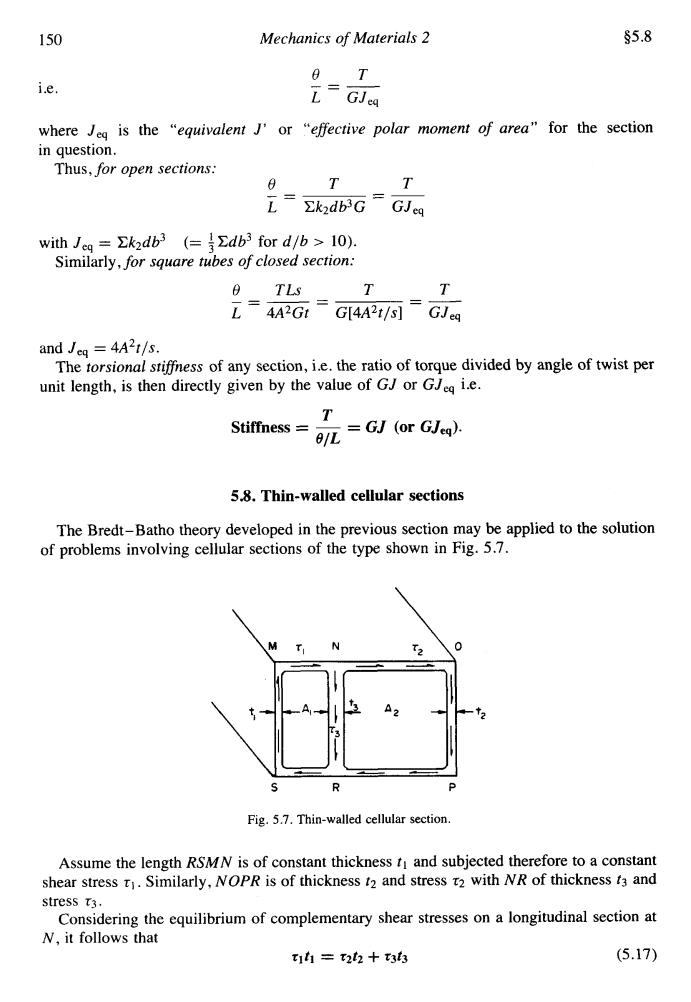正在加载图片...

150 Mechanics of Materials 2 $5.8 ie. L GJea where Jeg is the "equivalent J'or "effective polar moment of area"for the section in question. Thus,for open sections: T T L=EkadbG GJeg with Jeg Ek2db3 (=Edb3 for d/b>10). Similarly,for square tubes of closed section: 0 TLs T T L4A2GI G[4A2t/s]GJeq and Jeg 4A2t/s. The torsional stiffness of any section,i.e.the ratio of torque divided by angle of twist per unit length,is then directly given by the value of GJ or GJeq i.e. T Stitness==GJ (or) 5.8.Thin-walled cellular sections The Bredt-Batho theory developed in the previous section may be applied to the solution of problems involving cellular sections of the type shown in Fig.5.7. R Fig.5.7.Thin-walled cellular section. Assume the length RSMN is of constant thickness ti and subjected therefore to a constant shear stress t.Similarly,NOPR is of thickness t2 and stress t2 with NR of thickness t3 and stress t3. Considering the equilibrium of complementary shear stresses on a longitudinal section at N,it follows that T1h=2h+t33 (5.17)150 Mechanics of Materials 2 $5.8 i.e. where J,, is the “equivalent J’ or “effective polar moment of area” for the section in question. Thus, for open sections: T -- T - 0 L Ck2db3G GJeq - with J,, = Ck2db3 (= iCdb3 for dlb > 10). Similarly, for square tubes of closed section: 6’ TLs T -- T - - L 4A2Gt G[4A2t/s] GJeq and J,, = 4A2t/s. unit length, is then directly given by the value of GJ or GJ,, Le. The torsional stiffness of any section, i.e. the ratio of torque divided by angle of twist per T Stiffness = ~ = GJ (or GJes). @/L 5.8. Thin-walled cellular sections The Bredt-Batho theory developed in the previous section may be applied to the solution of problems involving cellular sections of the type shown in Fig. 5.7. S R P Fig. 5.7. Thin-walled cellular section. Assume the length RSMN is of constant thickness tl and subjected therefore to a constant shear stress rl . Similarly, NOPR is of thickness t2 and stress t2 with NR of thickness tg and stress r3. Considering the equilibrium of complementary shear stresses on a longitudinal section at N, it follows that Tltl = t2t2 + T3t3 (5.17)